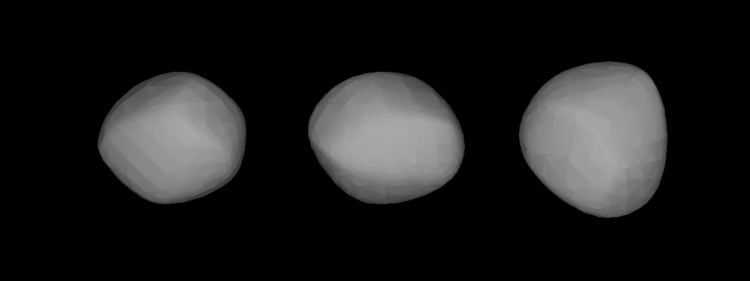Discovered by A. Marth Alternative names A899 NG Aphelion 409.809 Gm (2.739 AU) Spectral type S-type asteroid | Discovery date March 1, 1854 Minor planet category Main belt Discovered 1 March 1854 Orbits Sun | |
 | ||
Pronunciation /ˌæmfᵻˈtraɪtiː/ am-fi-TRY-tee Similar | ||
29 amphitrite occultation 2015
29 Amphitrite is one of the largest S-type asteroids, probably third in diameter after Eunomia and Juno, although Iris and Herculina are similar in size.
Contents
Discovery
Amphitrite was discovered by Albert Marth on March 1, 1854, at the private South Villa Observatory, in Regent's Park, London. It was Marth's only asteroid discovery. Its name was chosen by George Bishop, the owner of the observatory, who named it after Amphitrite, a sea goddess in Greek mythology.
Characteristics
Amphirite's orbit is less eccentric and inclined than those of its larger cousins; indeed, it is the most circular of any asteroid discovered up to that point. As a consequence, it never becomes as bright as Iris or Hebe, especially as it is much further from the Sun than those asteroids. It can reach magnitudes of around +8.6 at a favorable opposition, but usually is around the binocular limit of +9.5.
In 2007, James Baer and Steven R. Chesley estimated Amphitrite to have a mass of 1.9×1019 kg. A more recent estimate by Baer suggests it has a mass of 1.18×1019 kg.
A satellite of the asteroid is suspected to exist, based on lightcurve data collected by Edward F. Tedesco. In 1988 a search for satellites or dust orbiting this asteroid was performed using the UH88 telescope at the Mauna Kea Observatories, but the effort came up empty.
